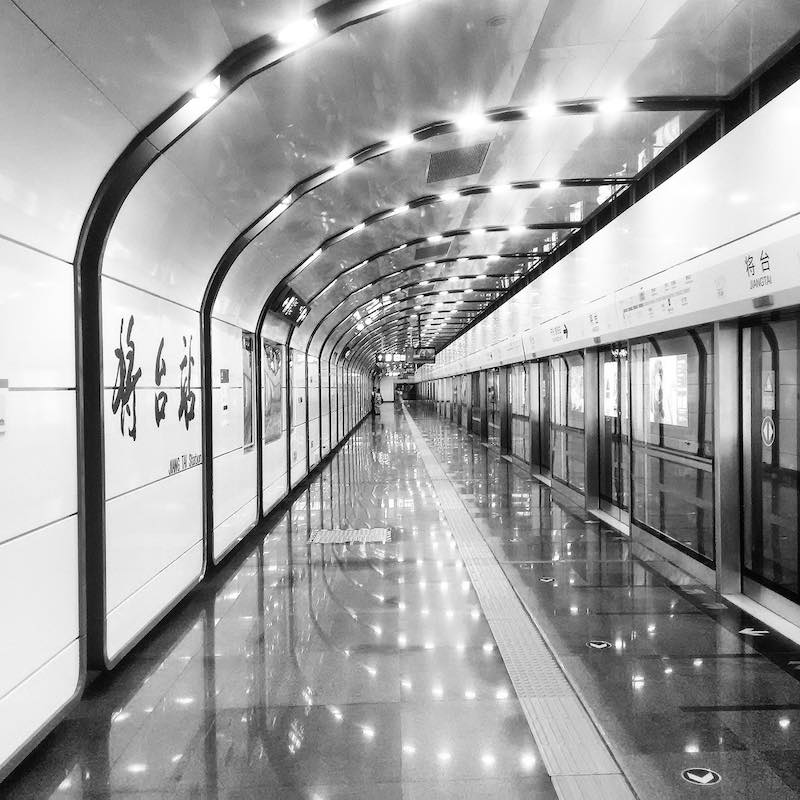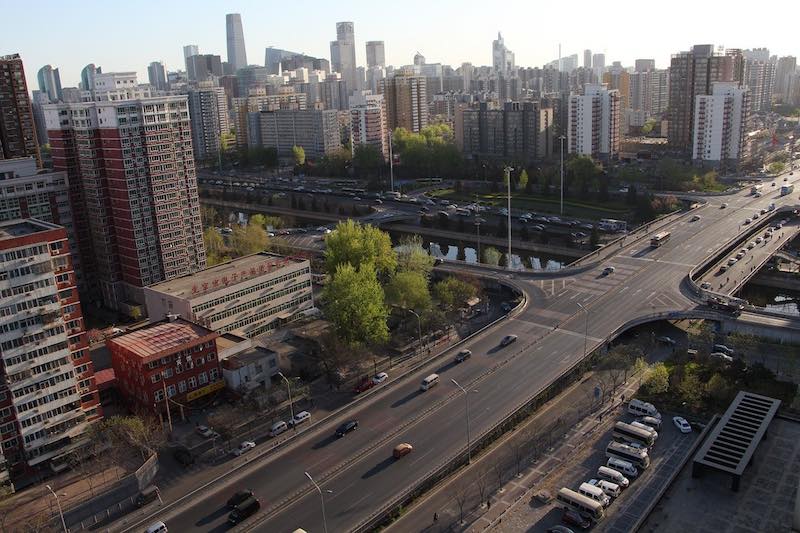Silk Alley Market Bejing, China
Quite possibly the "granddaddy" of all markets that I have ever visited. The bargaining is cut-throat so be sure to bring your A-game and bargain like never before!Silk Alley Market Snapshot
Location
The Silk Alley Market is located in the Chaoyang District, near the Yonganli metro station (Exit A). The building is actually quite modern, as it’s inside a large building. It looks like an actual mall.
Hours
The hours of operation of the Silk Alley Market are roughly 9:00 am until 9:00 pm.
What You'll Find
The quality of the products at the Silk Alley Market are actually quite good. I’d recommend shopping for shoes, shirts, coats and accessories. The quality is consistent across all shops, so you won’t get much variation among stores.
Market Video
She Drives a Hard Bargain!
In this video we are in Beijing at the Silk Alley Market. We’re on the lookout for some shoes, coats, and other branded apparel. But as you will see, you’ll need to bring your game to get a deal here.
Everything to Know About the Silk Alley Market
How to Get to the Silk Alley Market
The Silk Alley Market is now in a large shopping mall-type building and stands near Yonganli metro station (Exit A), close to another iconic market, the Pearl Market or the Hongqiao Market near the Temple of Heaven.
As a result, the easiest and cheapest way to get to the Silk Alley Market is by subway.

Transportation in Beijing
Shopping at the Silk Alley Market
You could say that Chinese markets offer the ultimate shopping experience; with the mind-boggling variety, dirt-cheap prices, and nerve-wracking haggling. Typically, you can find knockoff versions of any brand or product but sometimes in the same markets, you can find the original products at cheap prices. Perhaps that’s why travelers never miss a chance to shop in these markets.

Like any typical Chinese market, Silk Alley is overflowing with goods and bustling with crowds. You can shop for silkwear, bags, shoes, clothing, t-shirts, souvenirs, down jackets, and pretty much everything else. Being a market that’s really popular with tourists, Silk Alley is overloaded with silk goods, jewelry, clothing, electronics, tourist souvenirs, and virtually everything that you may want to shop for.
Where to Stay in Bejing
There is no shortage of accommodation options in Beijing. The city is huge and you can stay in a luxury hotel to a reasonable hostel. It just really depends on where you want to be located and what your budget is.
Here are my recommendations for some top rated places to stay in Beijing that are near all the action.
1. Peking Station Hostel
This is an excellent location right in the heart of Beijing that offers great access to the Silk Alley market. And with only 12-minute drive from Wangfujing Pedestrian Street, this place offers accommodation in an old-style Hutong courtyard. Chic guest rooms are set up in a Ming Dynasty neighborhood with ancient walls, tiles, and roofs. From here the Dongdan Subway Station is only 400 meters. Air-conditioned dormitory beds and rooms are available with a snack bar.
2. Courtyard Wangfujing
This is another centrally-located home stay facility in an ancient courtyard hutong. Free wifi, kettle and coffee machine are available in the room. If you like, you can expect nice Chinese food from the owner.
3. Happy Dragon City Hotel
Located just a 10-minute walk from the Dengshikou Subway Station, this hotel is in a Chinese hutong. The Wi-Fi is free and you get a welcome drink while checking in. The rooms have private bathrooms. They also have food available at the restaurant and a range of coffee, and other drinks as well as Western and Chinese dishes in the café.
Neighborhoods in Beijing
Beijing is a melting pot of different cultures within China as well as people from around the world. It’s big and diverse, for a Chinese city. The long history of the city which spans thousands of years has given its neighborhoods a charm and appeal that’s unique. No matter how long your stay in the city is, it’s always an adventure to go explore the different neighborhoods. Here are a few popular areas to check out.

Gulou
This is a cool neighborhood with Drum and Bell Towers as major landmarks. It has the typical Beijing charm with some traditional areas that include narrow lanes and charming homes, but there are also bars, restaurants, live music to enjoy for a night out.
Wudaokou
This is where you find most international students living and studying alongside their Chinese counterparts. The picturesque Tsinghua University is located here, as well as and the Summer Palace as well as the Old Summer Palace (Yuanming Yuan) which are popular with tourists. But with all the young students, this area is where you can find some fun student-dominated nightlife.
Chaoyang
The Chaoyang area of Beijing is where you will find a lot of expats living. As a result, the area is full of shopping malls, cafes, bars, restaurants and other nightlife. This part of town is also very well connected with transportation around town as well as airports to get in and out of town. Making it a convenient and fun area to be located.
Food in Beijing
What to Eat in Beijing?
Beijing is where you can find just about any type of Chinese food, but it’s also big enough that you’ll find more international options here than in most Chinese cities. On the one hand, you have fast-food chains dishing out more recognizable dishes of any ethnic origin — continental, South East Asian, Chinese, South Asian –, and on the other hand, there are a large number of restaurants and street food vendors who churn out local delicacies at reasonable prices.
Famous Peking Duck is a classic dish to try.
Of course, Beijing’s own Peking duck is easily available so it is noodles, rice, soy sauce, tofu, and Chinese tea. The rich seasoning and cooking techniques represent the ethnic diversity in culinary practices. Among other tasty Beijing dishes, you can try Jin Jiang Rousi, Chinese Dumplings Jiaozi, and Noodles in Soybean Paste (Zhejiang Mian).
Street Food Near Silk Alley Market
The Silk Alley market has a food court on the top floor where both small eateries and good restaurants exist. After walking and shopping through the crowded market, you can come here to refresh and recharge yourself.
Coffee and restaurant chains such as Quanjude Roast Duck, Lavazza, SPR Coffee, Subway coexist with inexpensive Chinese food outlets and buffet restaurants. There are a number of pizza restaurants and coffee shops on the ground floor that you can access from outside the building and you might even find a couple street food vendors set up, depending on the time and day.
About Silk Alley
It can be confusing because this market is sometimes referred to with different names such as Silk Market, Silk Street, Silk Alley, Xiushui Street, and Xiushui Market, etc. But the market has been more widely known as Silk Street or Silk Market, a name given by foreign tourists who were awe-struck by the variety of silk products and travel souvenirs sold by 400-odd shops on this street between 1982 to 1985.

With the growth of China as the “factory of the world” and the simultaneous push for development, the Silk Alley market has moved into an eight-floor department store occupying 376,737 sq meters of space and hosting 1,700 retail stores. The market now competes with other popular markets of Beijing such as Wangfujing Street and Xidan.
China Intro
History of China
The written evidence of Chinese history dates back to 1250 BC when the Shang dynasty (1600-1046 BC) was in power. The Shang dynasty mainly ruled the Yellow River valley which is considered to be the origin of the Chinese civilization. However, the Yangtze River also attracted early settlers who formed Neolithic civilization. Along these two rivers, the Chinese civilization thrived and had a continuous history of thousands of years. China had a long history of internal political conflicts and dynasties coming to power. In the last dynasty, the Qing ruled from 1644 to 1912. In 1912, the Republic of China took over which was replaced by the People’s Republic of China in 1949.
Introduction to Beijing

Besides being the capital of modern China, Beijing is a cultural melting pot of diverse nationalities, cultures, and ways of living. The city’s history dates back to 3,000 years when it emerged as the capital of Jin and Yan provinces. During the dynastic rule in the first millennia, Beijing was never the seat of power that it became during the 10th and 13th centuries. Back then, the Liao and Jin dynasties chose Beijing as their capital. Around the same time, it became the capital for the entire of China for the first time when the Yuan dynasty (1279-1369) bestowed this status to this amazingly beautiful and culturally vibrant megacity. Except for a few brief interruptions, Beijing has served as the capital of China ever since till the present day.
